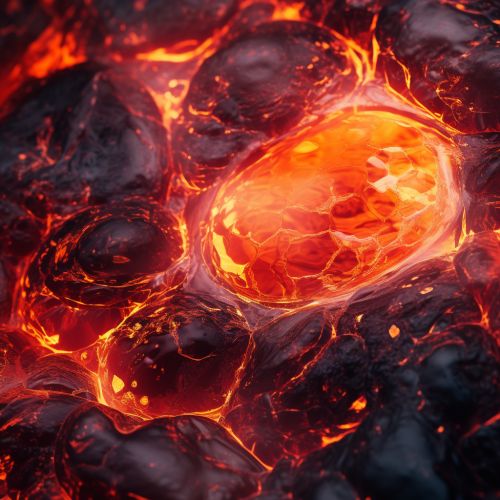Magma
Introduction
Magma is a complex high-temperature fluid substance. It is a primary agent in the formation of igneous rocks and plays a significant role in the crust and mantle of the Earth and other terrestrial planets.


Formation
Magma is formed when the Earth's mantle melts. Melting is caused by one or more of three processes: an increase in temperature, a decrease in pressure, or a change in composition.
Composition
The composition of magma can vary substantially. The most common types of magma are basaltic, andesitic, and rhyolitic.
Properties
Magma behaves in a manner similar to other fluids, but with some unique properties due to its composition, temperature, and the crystals and bubbles it contains.
Magma Movement
Magma can intrude into the crust, extrude onto the surface as lava, or explode into the atmosphere to form volcanic ash.
Magma and Volcanic Activity
The presence of magma is often a precursor to volcanic activity. The type of volcanic eruption, whether explosive or effusive, is determined by the composition of the magma.
Magma and the Earth's Crust
Magma plays a significant role in the formation and evolution of the Earth's crust. The cooling and solidification of magma create igneous rocks, which can form both the oceanic and continental crust.
Magma in the Solar System
Magma is not unique to Earth. It has been detected or inferred in several bodies of the solar system, including the Moon, Mars, Venus, and some of the moons of Jupiter and Saturn.
